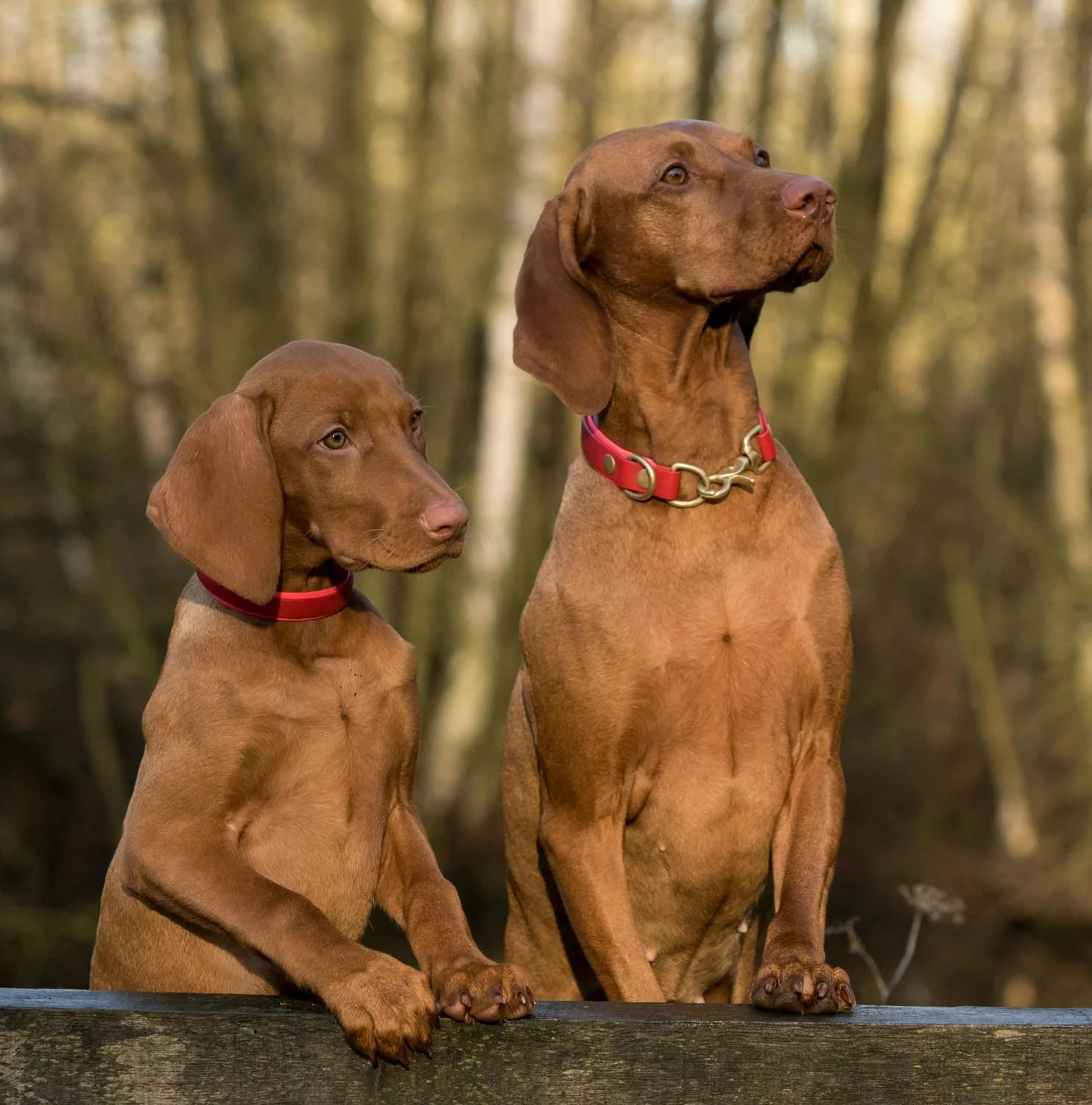How to Train Your Dog for Agility: A Beginner’s Guide

Introduction:
Agility training is a fun and engaging way to bond with your dog while providing them with the mental and physical exercise they need. Whether you’re looking to compete or simply want to challenge your dog’s mind and body, agility training offers a fantastic outlet. This guide will take you through the basics of agility training, from essential commands to setting up your own obstacle course at home. Let’s dive into the steps for turning your dog into an agility superstar!
What is Dog Agility Training?
Dog agility training involves a course of obstacles that dogs must navigate in a specific sequence. The sport tests the dog’s speed, coordination, obedience, and teamwork with their handler. Common obstacles include tunnels, weave poles, jumps, and A-frames, all designed to challenge your dog’s ability to follow commands while performing athletic maneuvers.
Agility training provides numerous benefits, such as:
- Physical Exercise: Keeps your dog fit and healthy.
- Mental Stimulation: Engages your dog’s problem-solving skills.
- Bonding Opportunity: Strengthens your relationship through teamwork.
- Improves Obedience: Enhances your dog’s ability to follow commands.
- Builds Confidence: Helps shy or timid dogs grow more confident.
Is Your Dog Ready for Agility Training?
Before you begin agility training, it’s important to ensure your dog is physically and mentally prepared for the challenges ahead. Here are a few factors to consider:
- Health Check: Have your vet give your dog a check-up to ensure they’re fit for intense physical activity.
- Age Consideration: Young puppies and older dogs may have limitations. Wait until your puppy’s bones are fully developed (around 12-18 months) before starting agility, and ensure senior dogs don’t push themselves too hard.
- Basic Obedience Training: Your dog should already know basic commands such as sit, stay, come, and heel before starting agility training.
Once your dog is ready, you can begin introducing them to the exciting world of agility!
Essential Equipment for Agility Training
Before starting agility training, you’ll need the right equipment. Many agility obstacles can be purchased online or made at home using basic supplies. Here are the most common agility obstacles:
- Jumps: These are hurdles that your dog must leap over. You can adjust the height based on your dog’s size and ability.
- Tunnels: Dogs must run through a fabric tunnel. This tests your dog’s speed and confidence in navigating through enclosed spaces.
- Weave Poles: A set of poles that your dog weaves in and out of. This is one of the trickier obstacles and requires precise footwork.
- A-Frame: A steep, A-shaped ramp that your dog must ascend and descend, testing their balance and coordination.
- Dog Walk: A long, narrow plank that your dog walks across, requiring balance and concentration.
- Teeter-Totter (Seesaw): Similar to a human seesaw, this obstacle requires your dog to walk across while it tilts under their weight.
You don’t need all the equipment to start. In fact, starting with just jumps and tunnels can be a great way to ease your dog into agility training.
Step-by-Step Guide to Starting Agility Training
1. Master Basic Commands First
Before starting agility, ensure your dog is proficient with basic commands. These will help your dog understand your directions on the course:
- Sit: The foundational command for control.
- Stay: Vital for waiting at the start line.
- Come: Your recall command to keep your dog focused on you during the course.
- Heel: Helps keep your dog close when moving between obstacles.
These basic commands will form the backbone of agility training.
2. Introduce Obstacles One at a Time
Begin by introducing your dog to each obstacle individually. Here’s how to approach each one:
- Jumps: Start with low jumps and guide your dog over them using treats or toys. Gradually increase the height as they gain confidence.
- Tunnels: Use a short tunnel at first. Encourage your dog to run through by showing them a treat or toy on the other side. Increase the length of the tunnel as your dog becomes more comfortable.
- Weave Poles: Guide your dog between the poles with treats or a target stick. Start slowly and gradually increase speed as they improve.
- A-Frame and Dog Walk: Use a leash to guide your dog over these obstacles initially. Reward them for successfully climbing and balancing.
- Teeter-Totter: Introduce this obstacle slowly. Use treats and encouragement to build your dog’s confidence as the seesaw tips.
Focus on each obstacle separately until your dog masters it. Don’t rush this process—it’s important for your dog to feel confident before moving to the next step.
3. Use Positive Reinforcement
Positive reinforcement is key in agility training. Reward your dog with treats, praise, or their favorite toy whenever they successfully complete an obstacle. Keep training sessions fun and upbeat, and always end on a positive note.
- Short, Fun Sessions: Agility training should be enjoyable. Keep sessions short (10-15 minutes) to prevent your dog from getting bored or tired.
- Consistency is Key: Practice consistently, several times a week, to reinforce learning.
4. Combine Obstacles into a Sequence
Once your dog is comfortable with individual obstacles, begin combining two or three obstacles into a sequence. For example:
- Start with a jump followed by a tunnel.
- Add weave poles after the tunnel.
Practice guiding your dog from one obstacle to the next using a combination of hand signals, verbal commands, and body language. As your dog becomes more confident, increase the number of obstacles in the sequence.
5. Teach Directional Commands
Agility relies heavily on clear communication between you and your dog. Teach your dog directional commands to help them navigate the course:
- “Left” or “Right”: Use these commands to direct your dog around corners or turns.
- “Go”: This command encourages your dog to move forward toward the next obstacle.
- “Here”: Use this to call your dog back toward you if they stray too far.
Use these commands while practicing obstacles and sequences to help your dog understand which direction to go.
6. Practice Handling Skills
In agility training, how you move is just as important as what your dog does. Practice the following handling skills:
- Front Cross: Change the side your dog is on by crossing in front of them as they approach an obstacle.
- Rear Cross: Let your dog cross in front of you while you change sides behind them.
- Body Language: Dogs are excellent at reading body language. Use your hand to point to the next obstacle, and position your body to guide your dog.
These handling techniques will help you guide your dog smoothly through an agility course.
7. Increase Difficulty Gradually
As your dog becomes more skilled, gradually increase the difficulty of your agility course:
- Increase speed: Encourage your dog to complete the course faster as they gain confidence.
- Add distance: Gradually move further away from your dog while still directing them through the course.
- Advanced obstacles: Introduce more challenging obstacles, such as the seesaw or weave poles, in combination with other tasks.
Common Challenges in Agility Training (and How to Overcome Them)
1. Distraction
Dogs can get easily distracted, especially in outdoor environments or during competitions. Use high-value treats and toys to maintain their focus, and gradually introduce distractions during training.
2. Fear of Obstacles
Some dogs may be hesitant or scared of certain obstacles, such as the tunnel or seesaw. Introduce these obstacles slowly, using positive reinforcement, and never force your dog to complete an obstacle if they’re afraid.
3. Overexcitement
Excited dogs may rush through the course, making mistakes or ignoring commands. Practice calm, controlled training sessions and encourage your dog to focus before increasing their speed.
Should You Compete?
While many people enjoy agility training as a fun way to exercise and bond with their dog, others may want to take it to the next level by competing. If you’re interested in agility competitions:
- Join a Local Agility Club: Most regions have agility clubs that offer training, practice sessions, and competitions.
- Start Small: Begin with local or novice competitions before moving to more advanced events.
- Have Fun: Remember that agility is about teamwork and enjoyment. Winning isn’t everything—have fun with your dog and celebrate their progress.
Conclusion: Agility Training as a Fun, Rewarding Experience
Agility training is an exciting and rewarding activity for both you and your dog. It promotes physical fitness, mental stimulation, and strengthens your bond through teamwork and trust. Whether you’re training for fun or preparing for competition, agility training offers a unique way to connect with your dog and keep them happy and healthy.




